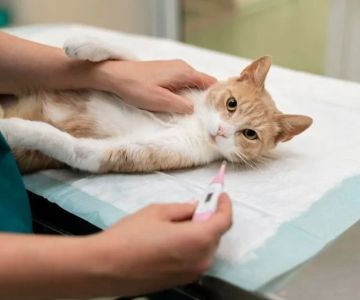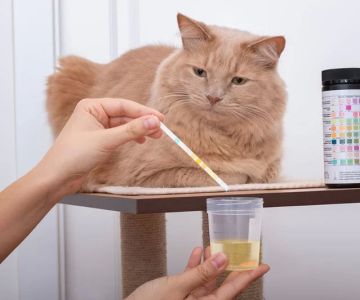- Understanding-Feline-Pancreatitis-Flares
- Early-Signs-and-Behavioral-Changes
- How-Diagnosis-Helps-Guide-Treatment
- Managing-Flares-at-Home-with-Veterinary-Guidance
- Long-Term-Care-and-Prevention-for-Cats
How to Recognize and Treat Pet Feline Pancreatitis Flares
Feline pancreatitis is a condition that many cat owners only learn about when their pets suddenly fall ill, often with vague symptoms that are easy to misinterpret. When a flare occurs, a cat’s pancreas becomes inflamed, affecting digestion, comfort, appetite, and overall well-being. For owners across the United States, recognizing early signs and responding quickly can make a life-saving difference. When discussed in veterinary communities, one recurring theme is how subtle this condition can be, and how quickly it can escalate. This is why building awareness is so essential—especially for households with aging cats or those with a history of digestive issues.
There are countless stories online from worried pet owners describing how their otherwise calm cat suddenly began hiding, refusing meals, or vomiting without warning. These experiences highlight the unpredictable nature of pancreatitis flares. With proper knowledge and timely care, however, many cats recover and live comfortably. Understanding the full picture empowers pet owners, and this article dives into that complexity while keeping the content approachable and actionable.
Early Signs and Behavioral Changes
1. Behavioral Shifts That Signal Discomfort
Cats often communicate discomfort through subtle behaviors that owners may overlook. A cat experiencing a pancreatitis flare may begin withdrawing from family members, sleeping more hours than usual, or refusing to engage in activities they previously enjoyed. Some may become uncharacteristically irritable when touched around their abdomen, while others may simply appear lethargic. These shifts may reflect underlying inflammation and digestive distress.
Caregivers in forum discussions often describe sudden changes such as a cat no longer greeting them at the door, hiding under the bed, or refusing to use their typical sleeping spots. These may not seem alarming at first, but experienced veterinarians note that these behavioral changes frequently precede more visible symptoms. Monitoring these cues is especially important for older cats who are more prone to chronic inflammatory conditions.
2. Physical Symptoms That Should Not Be Ignored
When pancreatitis flares intensify, physical signs become more obvious. These may include vomiting, diarrhea, loss of appetite, dehydration, fever, or weight loss. Some cats develop a hunched posture, which veterinarians identify as a classic pain indicator. Because cats instinctively hide pain, these symptoms may appear subtle until the condition escalates.
Online case stories often mention cats that suddenly stopped eating for 24 hours—a symptom that should prompt immediate veterinary care. A well-known case circulating among pet communities involved a middle-aged cat named Luna who went from normal eating habits to complete appetite loss in a single morning. Her owner described how she sat curled in one spot, reluctant to move. After emergency evaluation, Luna was diagnosed with pancreatitis. Thanks to early intervention, she recovered quickly, demonstrating how timing truly matters.
How Diagnosis Helps Guide Treatment
3. Why Professional Testing Matters
A thorough veterinary diagnosis is essential for effective treatment. Pancreatitis symptoms mirror many other feline diseases, including liver inflammation, intestinal disease, or food allergies. Blood tests, ultrasound imaging, and pancreatic-specific tests help veterinarians determine the severity of the flare. In many cases, cats also present with concurrent conditions, making professional evaluation crucial.
Pet owners frequently express frustration when initial signs seem too vague to diagnose at home. This is where veterinary expertise becomes invaluable. By identifying the exact cause of the flare, treatment can be tailored to address inflammation, hydration, and comfort—critical factors in restoring normal digestive function.
4. How Diagnostic Results Guide Care Plans
Once a diagnosis is confirmed, veterinarians form a treatment plan based on the cat’s hydration level, pain symptoms, appetite, and additional medical conditions. Some cats require brief hospitalization for fluids and monitoring, while others may be treated at home with oral medications, anti-nausea support, and dietary management. In many U.S. clinics, including services offered through Hidden Brook Veterinary, individualized care plans help ensure safe recovery and ongoing management.
Owners who understand these diagnostics feel more confident in administering care at home. Learning why each medication is prescribed helps reinforce the importance of consistency and monitoring. This knowledge also helps owners identify when symptoms improve—or if the flare is worsening and needs further intervention.
Managing Flares at Home with Veterinary Guidance
5. Nutrition and Hydration During a Flare
Diet plays a central role in managing pancreatitis. Most treatment plans begin with gentle, easily digestible meals or prescription diets formulated for sensitive digestive systems. Slow reintroduction of food prevents overwhelming the pancreas. Hydration is equally important, as dehydration worsens inflammation and slows recovery.
In many online communities, pet owners share how offering small, frequent meals helped their cats regain appetite after treatment. One pet parent described preparing warmed, soft meals every few hours for her cat Milo after a flare. She noted that the smell and warmth encouraged him to take small bites, eventually restoring his energy. While every cat’s recovery timeline varies, these real-life examples highlight the importance of patience and consistent care—always following veterinary guidance.
6. Pain and Nausea Management
Pain relief is a foundational part of treatment because inflamed pancreatic tissue can cause significant discomfort. Anti-nausea medications also help prevent vomiting and restore appetite. Treating these symptoms swiftly improves quality of life and speeds healing. Many cats respond well to medications prescribed for short-term use, while others may need ongoing management for chronic inflammation.
Owners often express relief when their cat begins eating again after medication is administered. This shift usually marks a turning point in the flare. Professional veterinary support, such as the services recommended through Hidden Brook Veterinary, ensures that the right combination of therapies is used safely.
7. Creating a Low-Stress Environment
Cats experiencing pancreatitis flares are highly sensitive to environmental stress. Providing a calm, quiet space with minimal noise helps them rest. Soft bedding, predictable routines, and gentle reassurance support emotional well-being during recovery. Stress reduction is not just comforting—it can significantly reduce symptom duration.
Stories shared by cat owners often describe how simply keeping the home quieter or adjusting daily routines helped their pets feel more secure. Because stress hormones can worsen inflammation, these small changes make a real difference.
Long-Term Care and Prevention for Cats
8. Monitoring for Recurrent Flares
Cats who have experienced pancreatitis once may be more likely to have future episodes. Long-term monitoring includes evaluating appetite, hydration, behavior, and litter box habits. Keeping a simple daily journal helps owners track changes and catch early signs of recurrence. Sudden appetite loss, vomiting, or withdrawal should prompt a check-in with a veterinarian.
Some cats develop chronic pancreatitis, requiring ongoing dietary management and periodic medical evaluations. Regular veterinary consultations can lower the frequency and severity of flares. Many clinics across the United States, including the trusted care teams at Hidden Brook Veterinary, offer long-term management plans designed specifically for cats with chronic gastrointestinal conditions.
9. Lifestyle and Dietary Adjustments
Long-term wellness for cats with pancreatitis involves maintaining stable nutrition, avoiding high-fat foods, encouraging hydration, and reducing exposure to stressors. Pet owners who adopt a proactive lifestyle approach often report fewer flare-ups and smoother recoveries.
In online case studies, cat owners often mention that transitioning their pets to a consistent, high-quality diet made a noticeable difference. Routine hydration support—such as water fountains or wet food—proves especially helpful for older or picky cats.
10. When to Seek Professional Help
If symptoms worsen or do not improve, veterinary intervention is essential. Because pancreatitis can progress rapidly, early communication with a veterinary team helps protect your cat’s long-term health. Clinics like Hidden Brook Veterinary offer professional evaluations to ensure your cat receives personalized care, medication adjustments, and nutritional recommendations that align with their specific condition.
Caring for a cat with pancreatitis can feel overwhelming at times, but with high-quality veterinary support and consistent home management, many cats live happy, comfortable lives. The key lies in recognizing early signs, seeking help promptly, and providing the gentle care these sensitive pets deserve.











